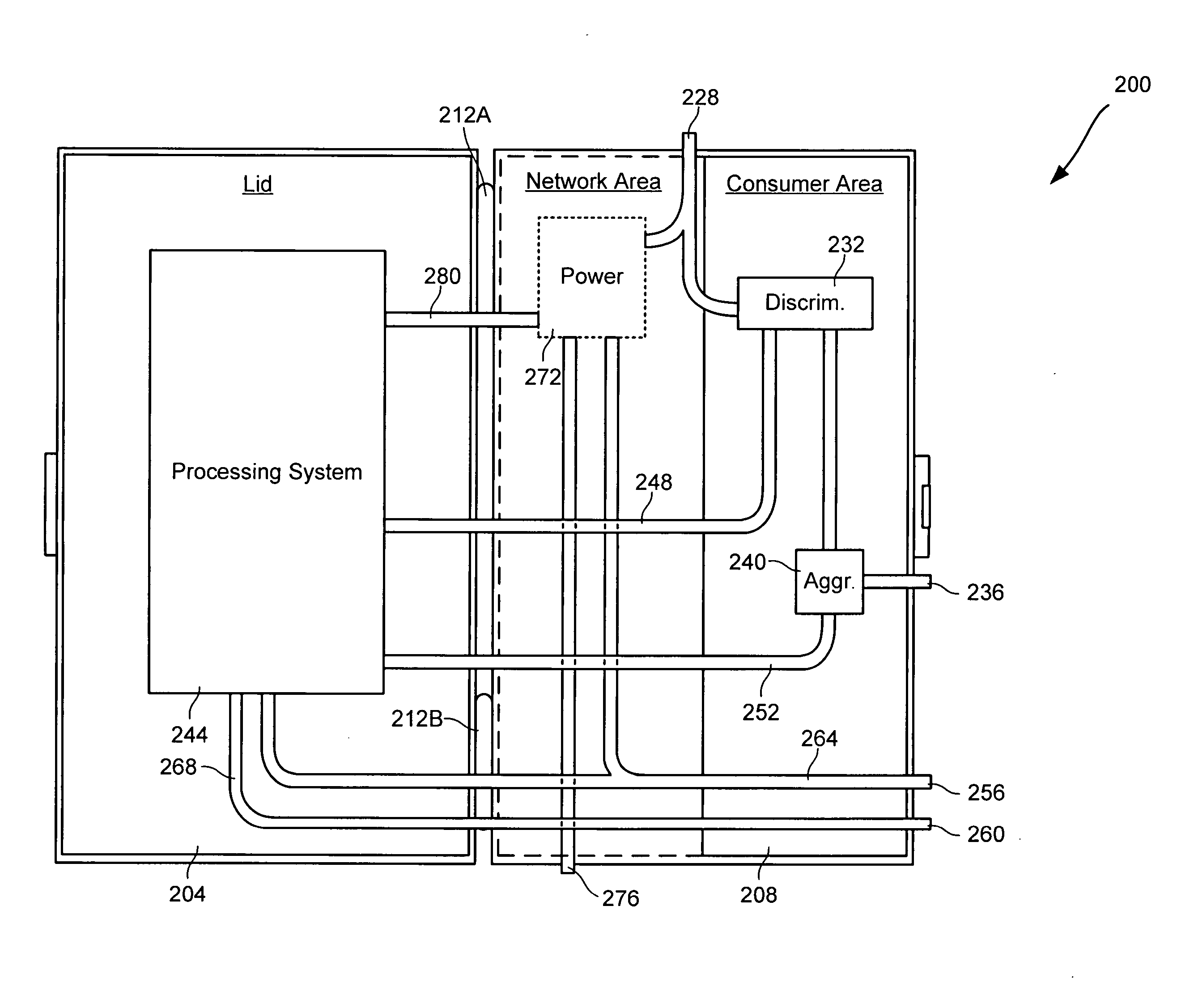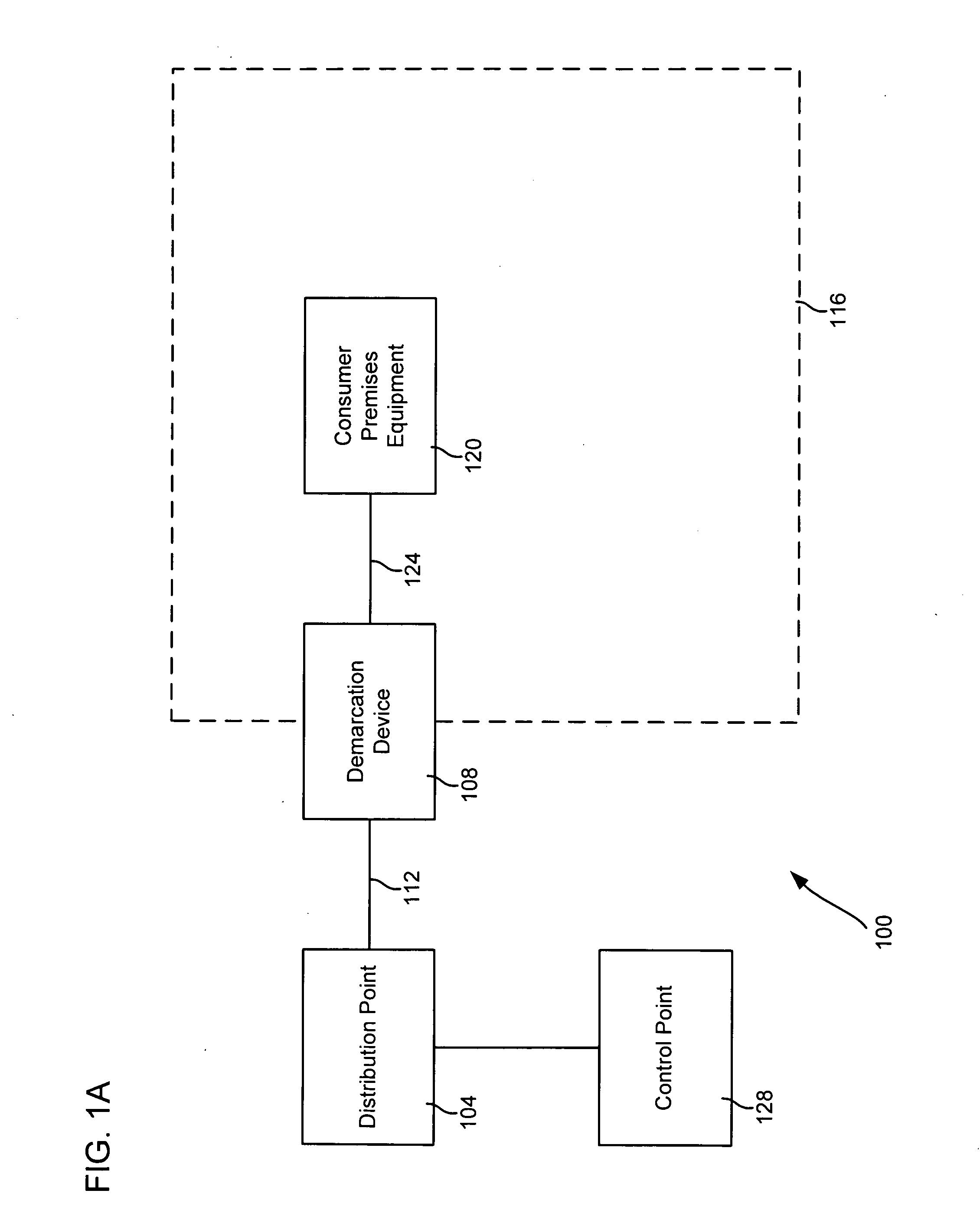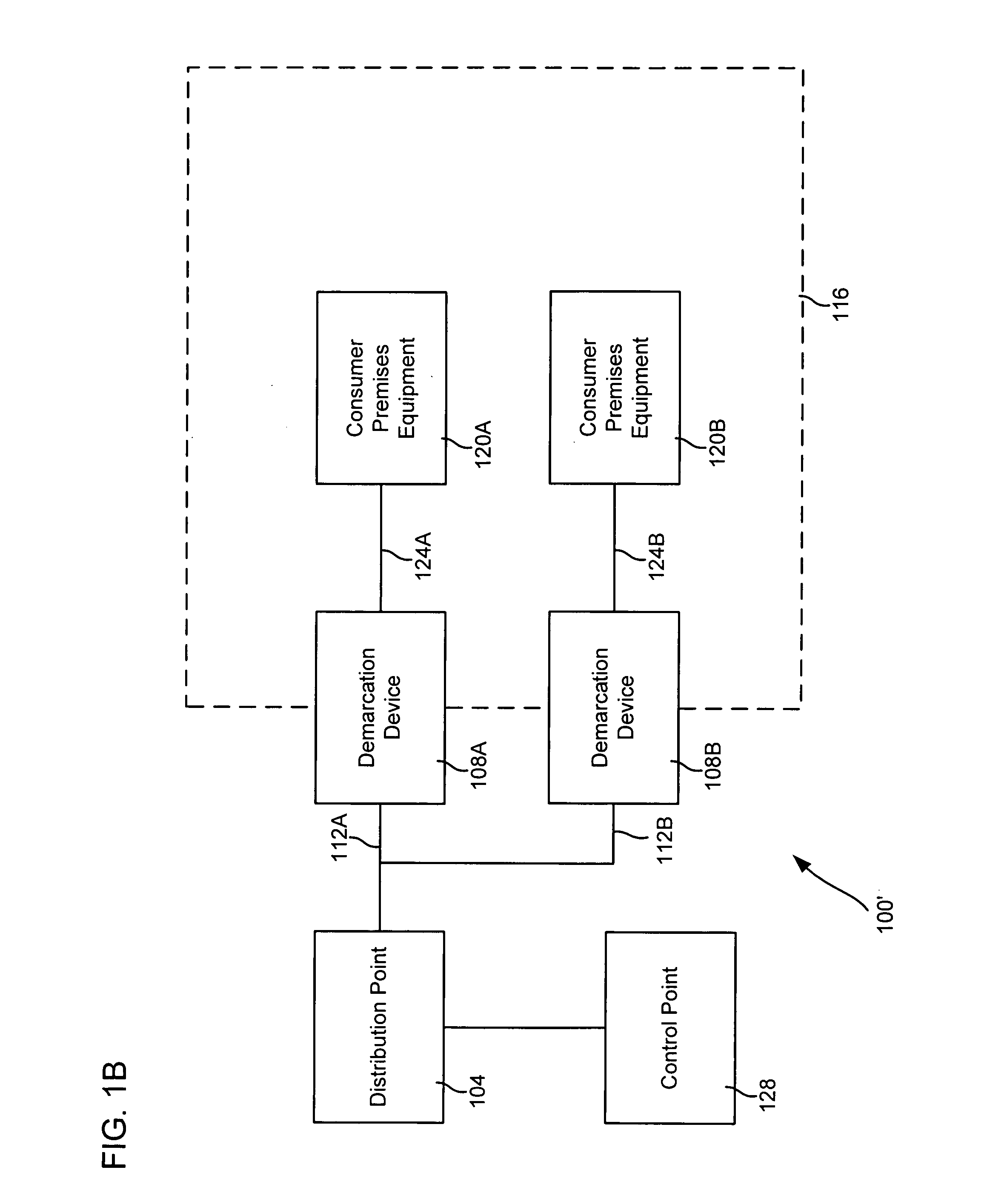Environmentally-controlled network interface device and methods
a network interface and environment-controlled technology, applied in the field of telecommunication services, can solve the problems of affecting the operation life of such batteries, affecting the performance and reliability of other electrical and/or optical components, and being prone to degradation
- Summary
- Abstract
- Description
- Claims
- Application Information
AI Technical Summary
Benefits of technology
Problems solved by technology
Method used
Image
Examples
Embodiment Construction
[0034] Certain embodiments of the present invention are directed to demarcation devices that can be used to provide telecommunication services, as well as to methods and systems of using such devices. A demarcation device can be any device capable of serving as an interface between a customer premises and a telecommunication service provider's network. Such devices can include, merely by way of example, set top boxes (which can be used, inter alia, as an interface between a customer's video appliance and a provider's video network), broadband modems (including xDSL modems, cable modems and wireless modems, each of which can be used to provide video and / or data to a customer premises), integrated access devices (which can, for instance, translate between Voice over IP (“VoIP”) signals and traditional telephone signals, thus allowing traditional telephones to connect to a VoIP network), devices compatible with the session initiation protocol (“SIP”) familiar to those skilled in the ar...
PUM
 Login to View More
Login to View More Abstract
Description
Claims
Application Information
 Login to View More
Login to View More - R&D
- Intellectual Property
- Life Sciences
- Materials
- Tech Scout
- Unparalleled Data Quality
- Higher Quality Content
- 60% Fewer Hallucinations
Browse by: Latest US Patents, China's latest patents, Technical Efficacy Thesaurus, Application Domain, Technology Topic, Popular Technical Reports.
© 2025 PatSnap. All rights reserved.Legal|Privacy policy|Modern Slavery Act Transparency Statement|Sitemap|About US| Contact US: help@patsnap.com



